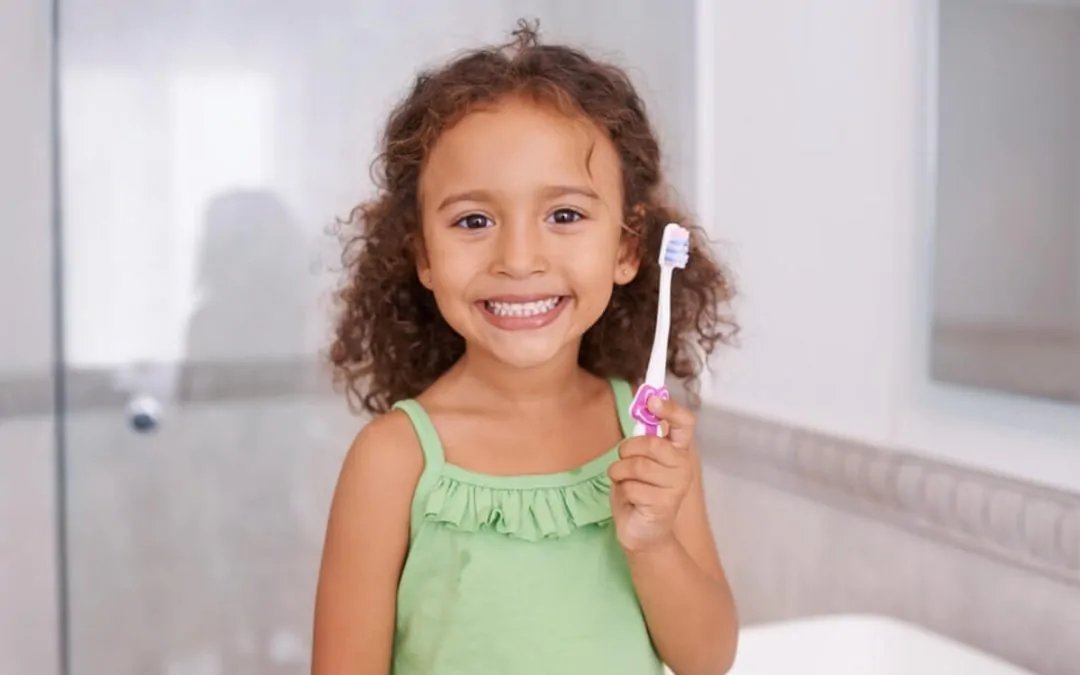Bad breath can be an uncomfortable and even embarrassing issue, but it’s also incredibly common. Whether it’s due to morning breath, certain foods, or underlying oral health issues, finding the best toothpaste for bad breath can make a major difference in achieving fresh breath and long-term oral health.
In this guide, we’ll explore the causes of bad breath, how to choose the right toothpaste, and what ingredients are proven to help. From options for sensitive teeth to fluoride-free alternatives and whitening toothpaste, we’ll help you find the best toothpaste that suits your needs, and your breath.
What Causes Bad Breath?
Bad breath, medically known as halitosis, usually stems from bacteria that live in the mouth. These bacteria break down food particles and release unpleasant-smelling compounds, especially when oral hygiene is poor.
Common causes include:
- Food particles trapped between teeth
- Dry mouth, reducing saliva’s natural cleansing effect
- Gum disease or periodontal disease
- Plaque buildup
- Eating pungent foods such as onions or garlic
- Smoking and alcohol
- Poor oral care habits
For some, chronic bad breath may signal deeper oral health issues, which is why consulting a dentist is always recommended if the problem persists.
What to Look For in Toothpaste for Bad Breath
Choosing the right toothpaste means looking for formulas with ingredients that actively fight the bacteria causing bad breath. Here’s what to prioritise:
1. Antibacterial Agents
Ingredients like zinc citrate, zinc chloride, and stannous fluoride help reduce bad bacteria and neutralise sulphur compounds that cause odour.
2. Fluoride or Fluoride-Free?
Fluoride helps fight cavities and strengthens teeth, making it an essential ingredient for many. However, fluoride-free toothpaste may be suitable for those with allergies or who prefer more natural options. Just be sure they contain other protective ingredients.
3. Ingredients That Freshen Breath
Look for xylitol, zinc compounds, baking soda, and essential oils that reduce odours and leave the mouth feeling clean.
4. Avoid Harsh Foaming Agents
Some toothpaste contains sodium lauryl sulphate (SLS), a detergent that may irritate sensitive gums and cause canker sores in some people.
5. Support for Sensitive Teeth
If you have sensitive teeth, choose toothpaste with potassium nitrate, which helps block pain signals from exposed nerves.
6. Texture and Taste
Texture (thanks to ingredients like xanthan gum) and taste matter more than you think. If you enjoy using your toothpaste, you’re more likely to maintain consistent oral hygiene habits.
Top Ingredients That Combat Bad Breath
Not all toothpastes are created equal, especially when it comes to combating bad breath. Certain active ingredients are more effective than others at neutralising odours, protecting against decay, and supporting a healthy mouth. Below are some of the most effective ingredients to look for in your toothpaste for bad breath, whether you’re after whitening toothpaste, relief for sensitive gums, or a gentler, fluoride-free toothpaste option.
Zinc Compounds (Zinc Citrate, Zinc Chloride)
These are among the most effective ingredients for targeting bad bacteria. Zinc compounds help neutralise volatile sulphur compounds, which are the main culprits behind odour. They’re also gentle enough for people with sensitive teeth or dry mouth, and they support fresh breath for longer periods.
Stannous Fluoride
Unlike standard sodium fluoride, stannous fluoride provides antibacterial protection alongside enamel strengthening. It helps reduce plaque buildup, prevents gum disease, and supports cavity protection, which are all critical in maintaining good oral hygiene and preventing oral health issues that contribute to bad breath.
Potassium Nitrate
Ideal for those with sensitive teeth or sensitive gums, potassium nitrate works by calming the nerves inside your teeth. It’s often found in specialised toothpastes that still offer bad breath control without sacrificing comfort.
Hydrated Silica
This mild abrasive helps remove plaque and surface stains without damaging enamel. When combined with antibacterial ingredients, it supports overall oral care and contributes to a whitening toothpaste effect for those wanting cosmetic benefits.
Sodium Fluoride
This is the standard active ingredient in many toothpastes that helps fight cavities, strengthens teeth, and offers reliable cavity protection. It also helps reduce the chance of odour-causing decay in hard-to-reach areas.
Baking Soda
Known for its gentle whitening effect, baking soda reduces acidity in the mouth, which helps to freshen breath and support a more balanced oral environment. It’s particularly helpful for people dealing with morning breath or eating certain foods that contribute to odour.
Xylitol
A natural sweetener that does more than improve taste. Xylitol inhibits the growth of bad bacteria, helping prevent dry mouth and lowering the chances of tooth decay. It works well in fluoride-free toothpaste and pairs effectively with sodium saccharin, xanthan gum, and other breath-freshening ingredients.
Best Types of Toothpaste for Bad Breath
Depending on your specific needs, there are several types of toothpaste that may be more effective than others:
 1. Whitening Toothpaste
1. Whitening Toothpaste
For those wanting both fresh breath and a whiter smile, whitening toothpaste can remove stains while also including antibacterial properties.
2. Toothpaste for Sensitive Teeth
If cold drinks and sweets make you wince, look for toothpaste that contains potassium nitrate for comfort alongside odour-fighting ingredients.
3. Fluoride-Free Toothpaste
Ideal for people avoiding fluoride, these toothpastes often rely on natural antibacterial agents. Just ensure they still offer cavity protection.
4. Toothpaste for Dry Mouth
A dry mouth limits saliva, a natural defence against bad breath. Use toothpastes that moisturise the mouth and avoid alcohol-based mouthwashes that worsen dryness.
Common Mistakes That Make Bad Breath Worse
Even if you use the best toothpaste for bad breath, certain habits may still be undermining your efforts to achieve fresh breath. Watch out for these common missteps in your daily oral care routine:
- Skipping Flossing Daily: Brushing alone can’t remove food particles stuck between your teeth. Flossing daily removes debris that contributes to bad bacteria growth and odour.
- Not Brushing the Tongue: Your tongue harbours a large portion of the bacteria responsible for bad breath. Use a soft-bristled toothbrush or tongue scraper to clean it thoroughly.
- Using Too Much Toothpaste: More isn’t better. A pea-sized amount is enough. Overuse may actually irritate sensitive gums or dry the mouth out, both of which can worsen breath.
- Choosing the Wrong Toothpaste: A toothpaste for bad breath should include antibacterial ingredients such as stannous fluoride, zinc compounds, or baking soda. Cosmetic-only formulas may miss the mark if they lack these essentials.
- Overlooking Dry Mouth: If you experience d0ry mouth frequently, your body lacks saliva to wash away bad bacteria. Look for toothpaste specifically formulated for dry mouth and avoid alcohol-based mouthwash.
- Ignoring Underlying Oral Health Issues: Persistent bad breath could be a sign of gum disease, tooth decay, or even periodontal disease. In these cases, a dentist’s input is essential.
Avoiding these mistakes, while maintaining consistent oral hygiene habits, supports better results and longer-lasting fresh breath.
Lifestyle Tips to Complement Your Toothpaste Routine
Oral care doesn’t stop at the sink. These lifestyle changes help you maintain a healthy mouth and maximise the benefits of your toothpaste:
- Stay Hydrated: Staying well hydrated throughout the day helps maintain moisture in the mouth and naturally clears away bacteria. It’s especially important for preventing dry mouth.
- Eat Fibre-Rich Foods: Crunchy fruits and vegetables like apples, carrots, and celery can naturally clean teeth and stimulate saliva production.
- Limit Sugar and Acidic Foods: These feed the bad bacteria in your mouth. When left unchecked, they increase your risk of cavities, plaque buildup, and worsening breath.
- Avoid Frequent Snacking: Especially on starchy or sugary snacks. Saliva production decreases when you snack often, which allows food particles to linger and feed bad bacteria.
- Be Mindful of Medications: Some medications cause dry mouth. If this applies to you, consider using a fluoride-free toothpaste with xylitol to reduce odour and protect against decay.
- Switch to Alcohol-Free Mouthwash: Many people believe mouthwash alone can prevent bad breath, but if it contains alcohol, it can actually dry out the mouth. Look for options that support whole-mouth health and work with your toothpaste rather than against it.
Making these small changes, along with using the best toothpaste tailored to your needs, can lead to a lasting improvement in breath and overall oral care.
Other Ways to Prevent Bad Breath
Bad breath isn’t just a toothpaste issue. Here’s how to keep your whole mouth in good shape:
- Replace toothbrushes every 3 months
- Use alcohol-free mouthwash
- Chew sugar-free gum to stimulate saliva
- See a dentist regularly
- Treat oral health issues like gum inflammation early
Morning Breath: Why It Happens
Morning breath is nearly universal and caused by a combination of dry mouth, bacteria buildup overnight, and lack of movement during sleep.
Combat it by brushing and flossing before bed, using a toothpaste with zinc citrate or zinc chloride, and drinking a glass of water upon waking.
Who Should You Speak to About Chronic Bad Breath?
If you’ve tried multiple strategies and still struggle with bad breath, consult your dentist. They can determine if gum disease, decay, or other dental concerns may be contributing to your symptoms.
Chronic halitosis could also be linked to other health problems, but a dentist is your first step for diagnosis and treatment.
Final Thoughts
Whether you’re battling occasional odours or a more persistent case, the right approach to oral care can make a world of difference. Using the best toothpaste for bad breath, together with proper oral care and routine dental visits, will support long-term freshness and a healthy mouth.
From zinc-based formulas to fluoride toothpaste with antibacterial ingredients, there’s something to suit every preference and need. Brush twice a day, floss daily, and be mindful of ingredients like baking soda, potassium nitrate, and hydrated silica to target the causes of bad breath from every angle.
If you’re concerned about bad breath or want personalised advice on choosing the best toothpaste for long-term oral health, book a consultation with us at Good Choice Dental or call (02) 8203 8760.
Resources
Nunez, K. & Healthline Editorial Team (2023). ‘What to Know About Dry Mouth’. Healthline, 9 March. San Francisco, CA: Healthline Media.
https://www.healthline.com/health/dry-mouth
Watson, S. (2024). ‘Gingivitis and Periodontal Disease (Gum Disease)’. WebMD, 9 February. New York, NY: WebMD LLC.
https://www.webmd.com/oral-health/gingivitis-periodontal-disease
Mayo Clinic Staff (2023). ‘Bad Breath’. Mayo Clinic, 21 December. Rochester, MN: Mayo Foundation for Medical Education and Research.
https://www.mayoclinic.org/diseases-conditions/bad-breath/symptoms-causes/syc-20350922
Cleveland Clinic (2022). ‘Oral Hygiene’. Cleveland Clinic, 21 April. Cleveland, OH: Cleveland Clinic.
https://my.clevelandclinic.org/health/treatments/16914-oral-hygiene



 1. Whitening Toothpaste
1. Whitening Toothpaste
Recent Comments